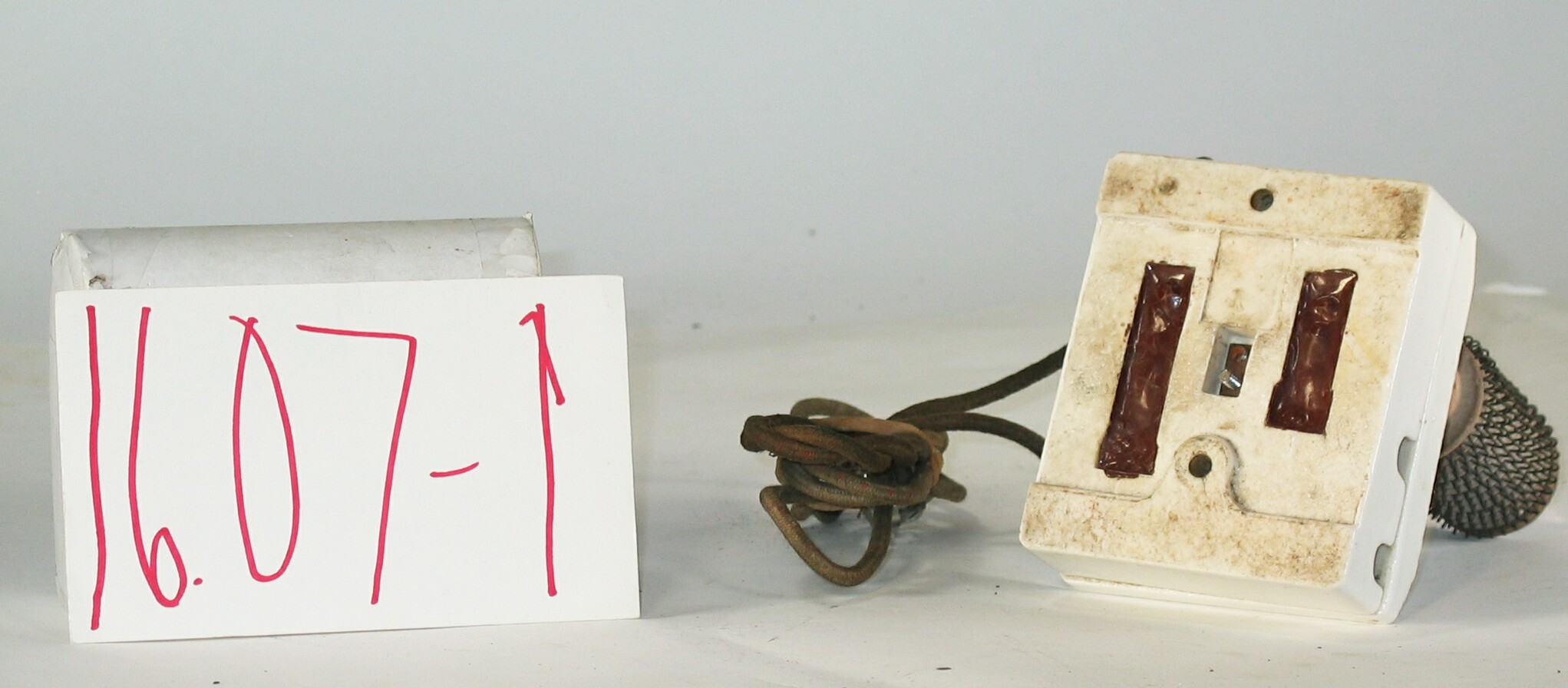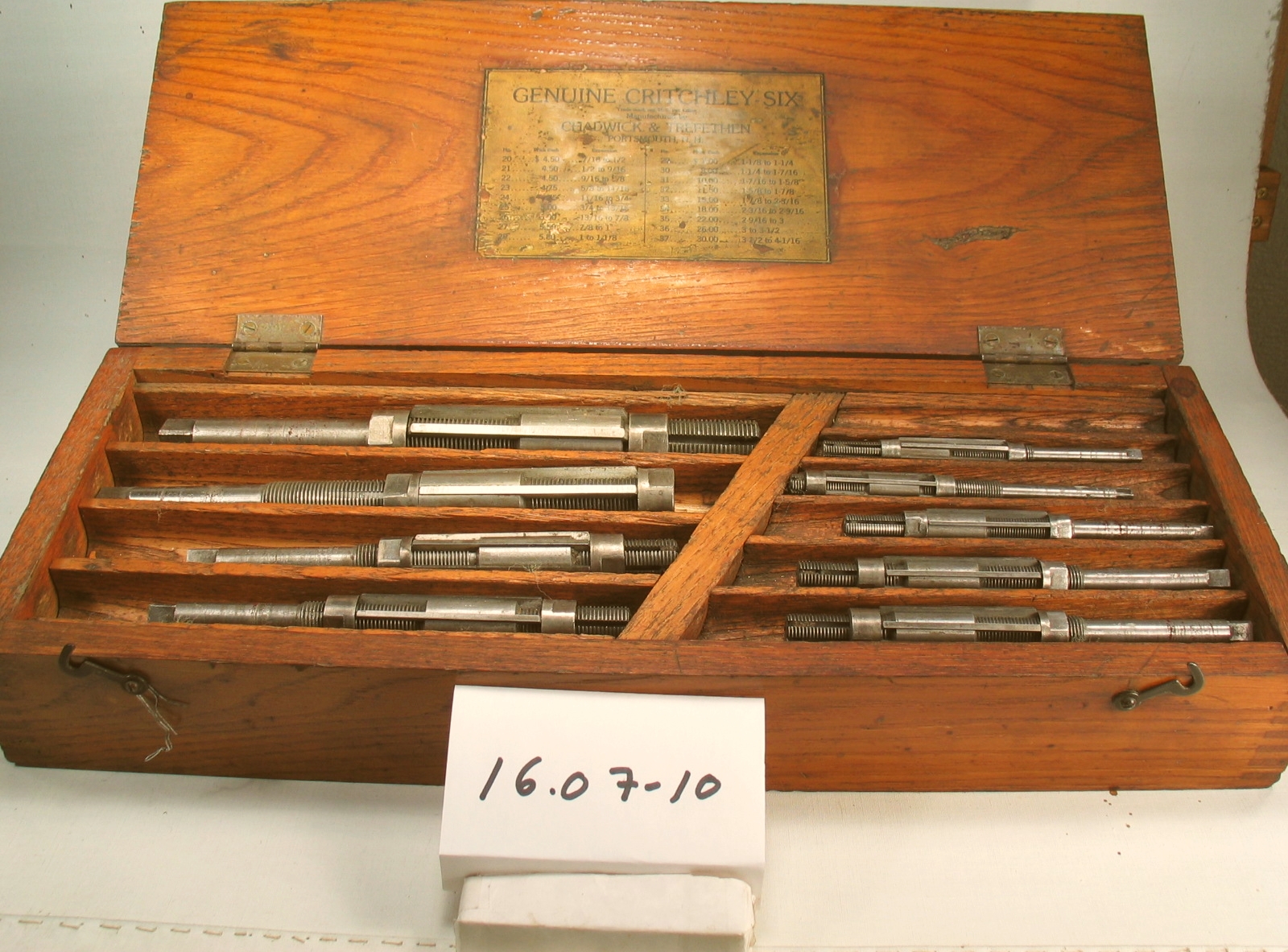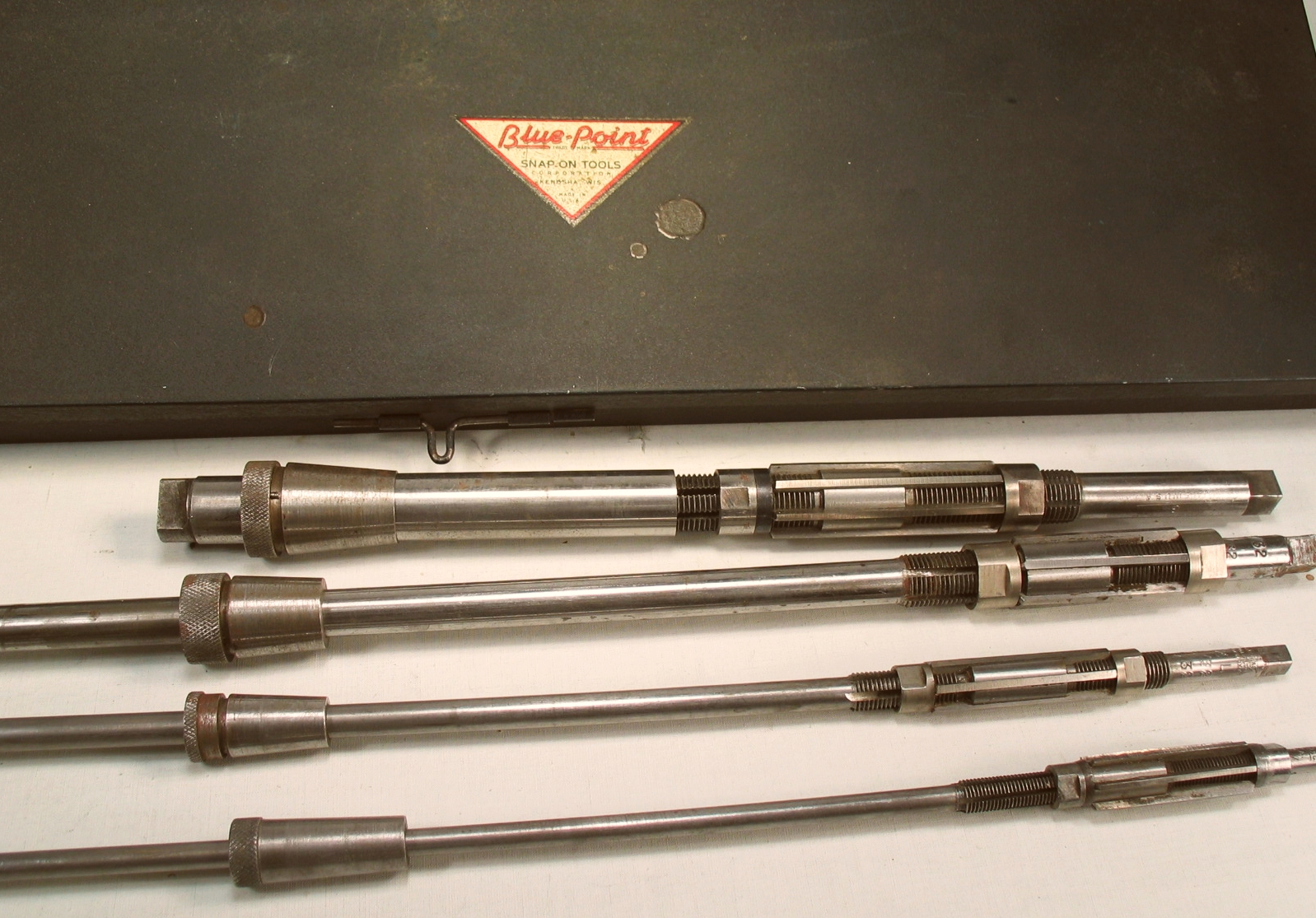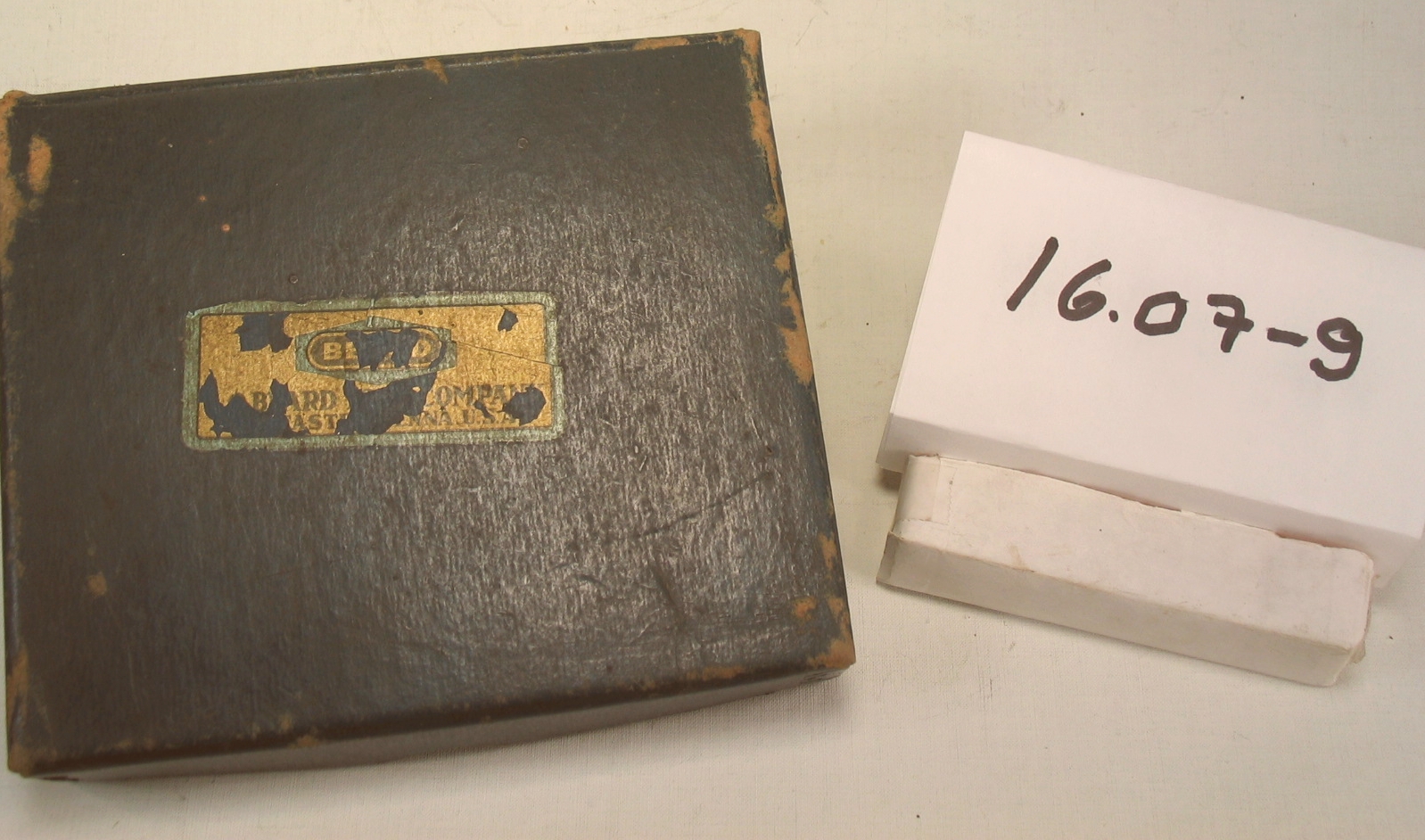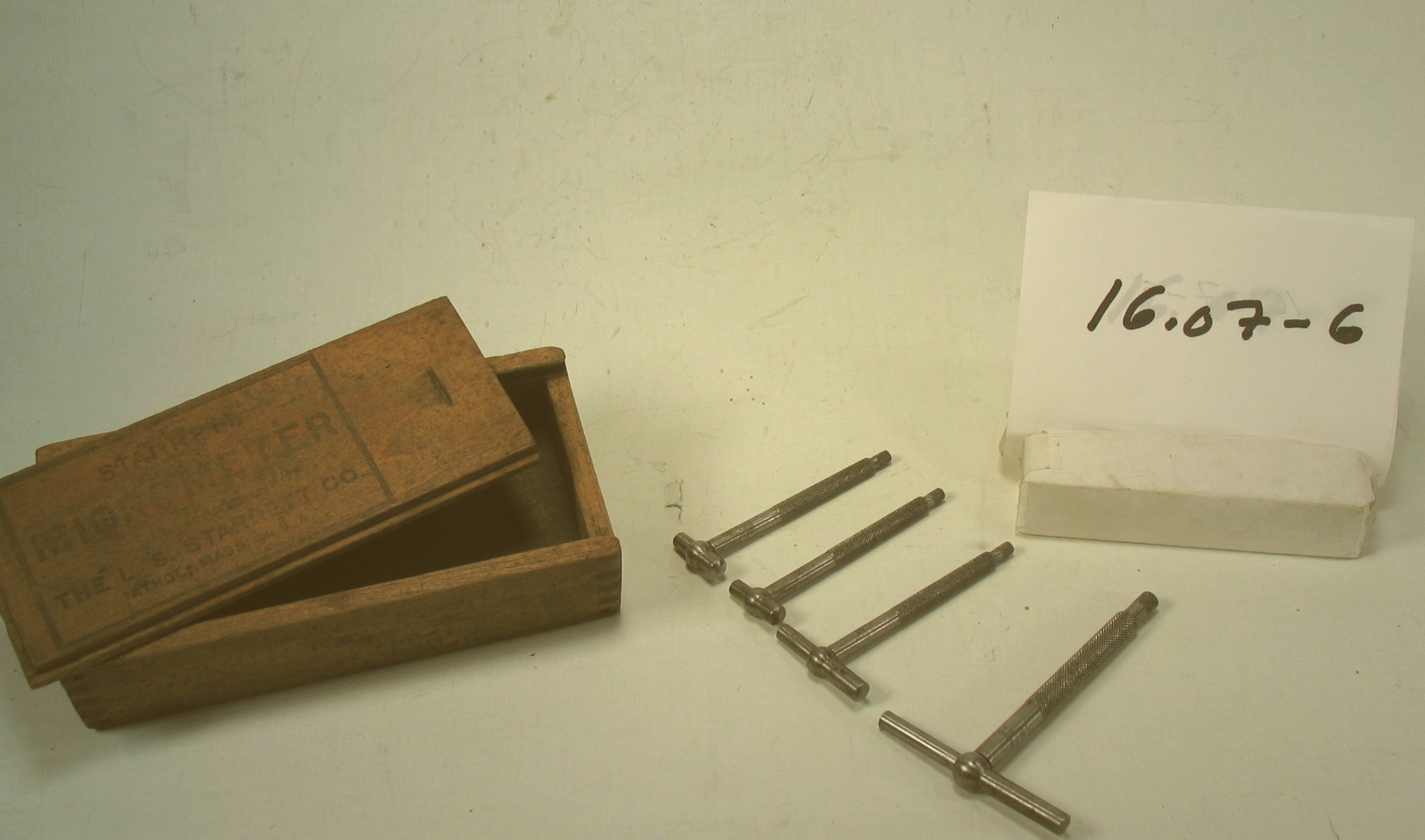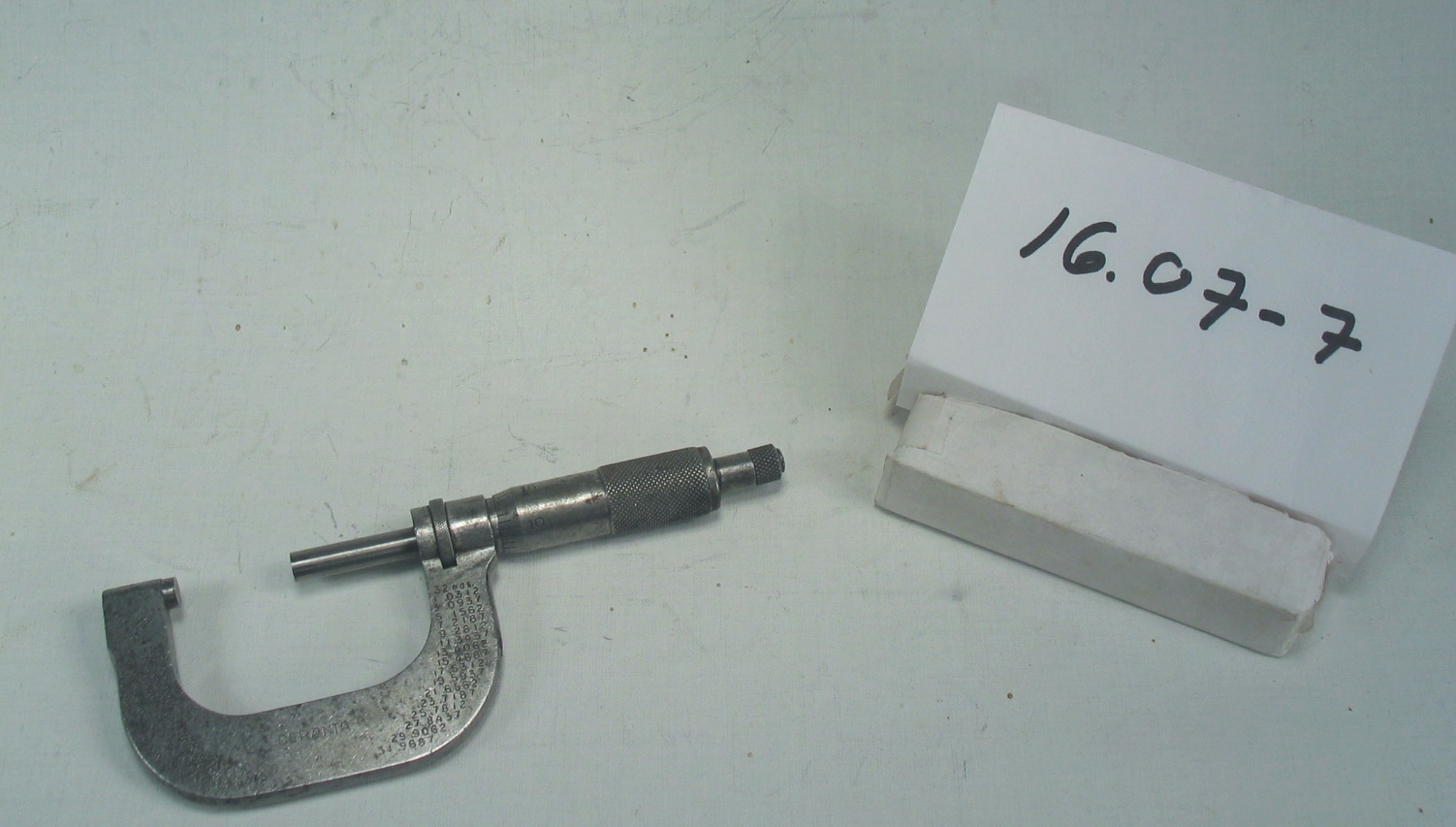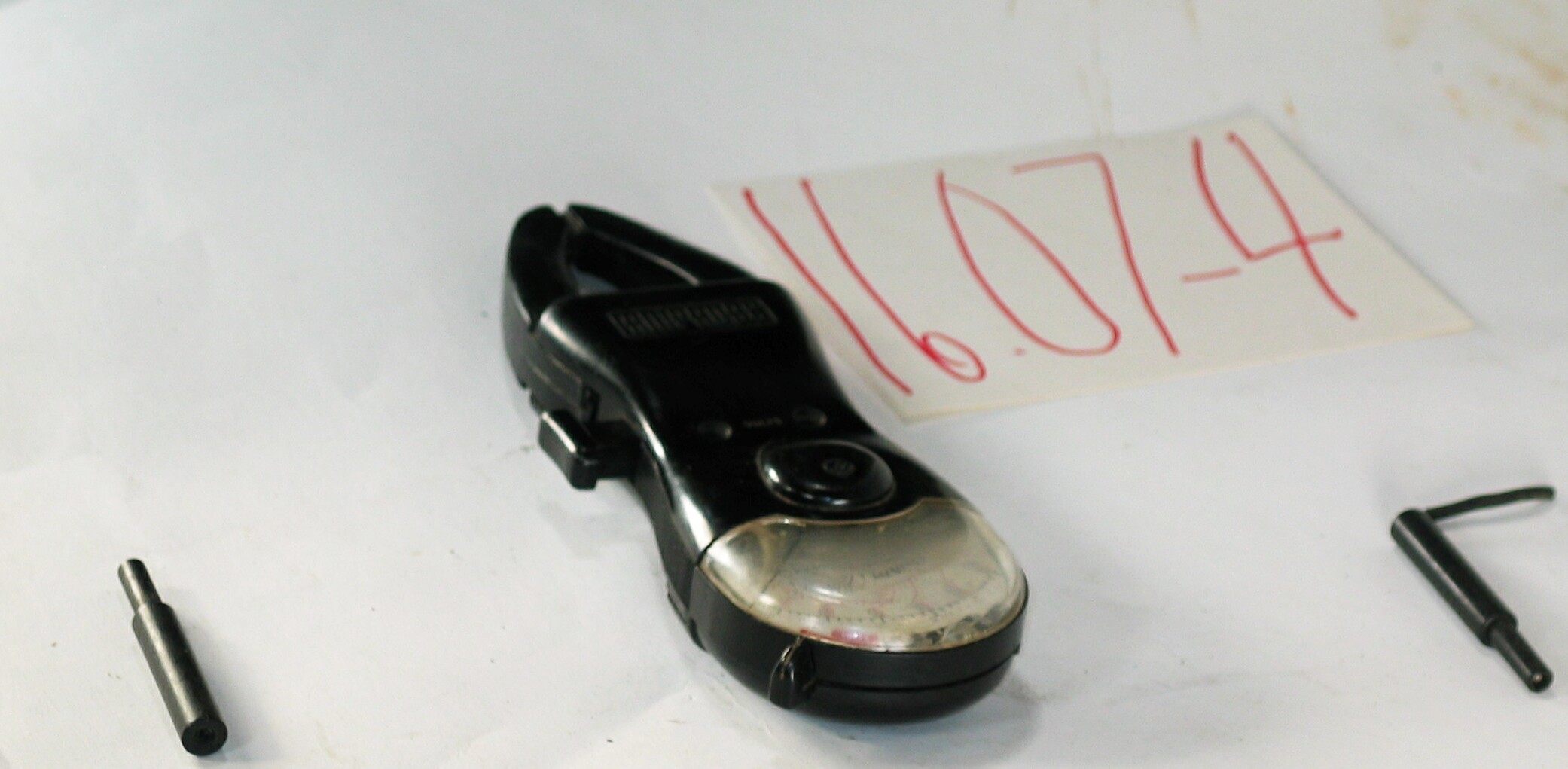16.07-5: Corbin 1946 Hand-Held, Rotary, Tachometer
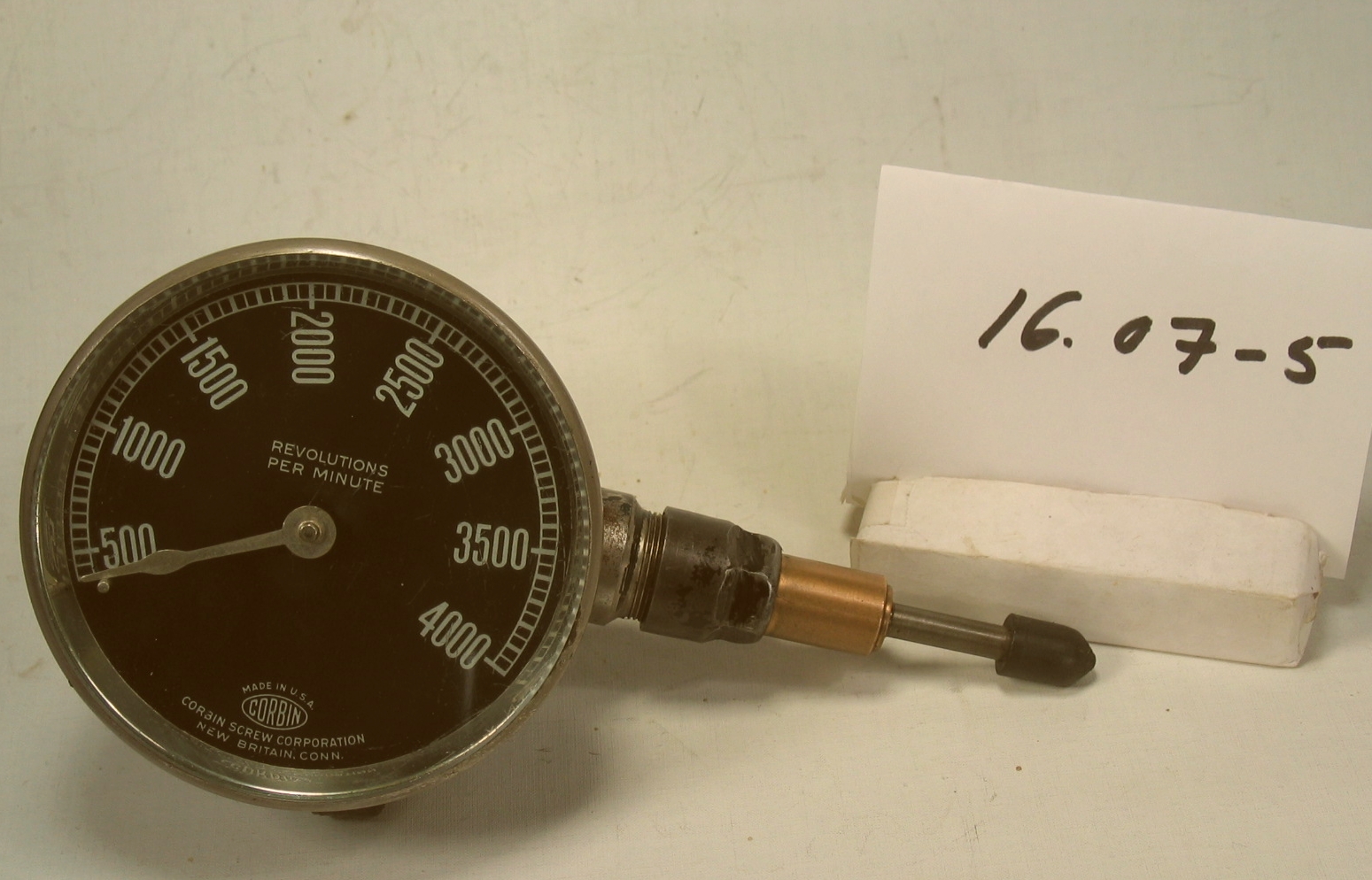
| HHCC Accession No. 2006.213 | HHCC Classification Code: 16.07-5 |
|---|
Description:
A portable, hand-held, rotary, tachometer, calibrated from 400 to 4,000 RPM, equipped with rubber friction drive. Among other things the device would be a marker of the increasingly sophisticated test and measurement equipment used by HVACR technicians involved in system applications and equipment re-engineering, as the mid 20th century emerged, Corbin Screw Corp. New Britain, Conn.. Circa 1945
Group:
16.07 Electric Motors - Installation, Test and Repair
Make:
Corbin
Manufacturer:
Corbin Screw corp. New Britain, Conn.
Model:
Unspecified
Serial No.:
Unspecified
Size:
5x 8 x 3 inch h.
Weight:
2 Lb.
Circa:
1946
Rating:
Exhibit, education, and research quality, illustrating hand held, dial tachometers for shop and field measurement by HVACR mechanics, working in applications engineering and equipment rebuilding and testing, by the mid the 20th century.
Patent Date/Number:
Provenance:
From York County (York Region) Ontario, once rich agricultural hinterlands, attracting early settlement in the last years of the 18th century. Located on the north slopes of the Oak Ridges Moraine, within 20 miles of Toronto, the County would also attract early ex-urban development, to become a wealthy market place for the emerging household and consumer technologies of the early and mid 20th century.
This artifact was discovered in the 1950’s in the used stock of T. H. Oliver, Refrigeration and Electric Sales and Service, Aurora, Ontario, an early worker in the field of agricultural, industrial and consumer technology.
Type and Design:
A portable, hand-held, rotary, mechanical, tachometer, calibrated from 400 to 4,000 RPM, equipped with rubber friction drive. A by-product of auto speedometer engineering of the 1930’s
Construction:
Highly polished stainless steel case, over painted in blue enamel, fitted with 4 inch, stylish, bevelled glass lens, equipped with black dial with gothic calibrated scale, and stylish company logo; ‘ inch drive with self centering friction rubber drive for hand held operation.
Material:
Special Features:
Accessories:
Capacities:
Performance Characteristics:
Operation:
Control and Regulation:
Targeted Market Segment:
Consumer Acceptance:
Merchandising:
Market Price:
Technological Significance:
This hand held rotary tachometer tells many stories of its time: The increasing sophistication of test and measurement equipment used by HVACR field workers starting in the 1940’s, The increasing demands made HVACR mechanics and the accompanying need for better indicating and recording instrumentation required for equipment: re-engineering, rebuilding, installation, performance monitoring, trouble-shooting, diagnosis and repair.
Industrial Significance:
The instrument is a marker of the vastly changing times in the Canadian refrigeration industry, evident by the 1940’s. Many changes were occurring in the industry; the embryonic and early development years of the 1920’ and 30’s were now history. The industry had new more sophisticated equipment, new refrigerants, and new applications and markets to be served. HVACR mechanics saw new opportunities in applications engineering and equipment re-engineering. It was a period of relative scarcity, one characterized by a preoccupation for thrift. Old equipment would be adapted to new refrigerants and new applications requiring changing compressor speeds. The arrival of frequency standardization in Ontario in the late 1940’s also meant significant alterations to condensing unit speeds, as 2 pole 25 cycle motors were replaced with 4 pole 60 cycle ones [see Series 16 artifacts]
The 1940’s and 50’s was also a period in which much rebuilding of open style compressors and condensing units took place. Small shops evolved to do this work as the opportunity arose. Compressor suction and discharge vales were relatively short lived, leading to losses in volumetric efficiency, requiring regrinding of valve plates and refitting of reed valves. In those shops equipped to do so, the volumetric efficiency of a rebuilt compressor would be checked at various speeds to ensure the required level of performance for the application [low or commercial temperature] and the refrigerant to be used [typically, sulphur dioxide, methyl chloride, or Freon 12]. See also Series 16 artifacts, item 16.01-4.
Socio-economic Significance:
Socio-cultural Significance:
Donor:
G. Leslie Oliver, The T. H. Oliver HVACR Collection
